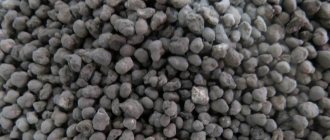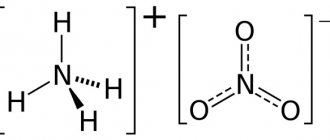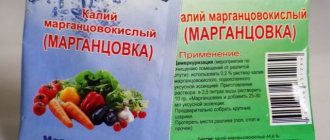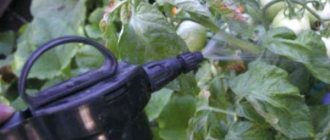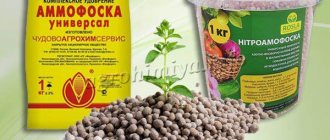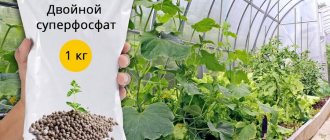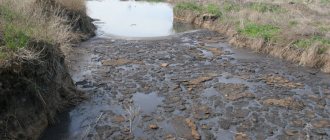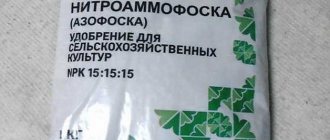A common, relatively inexpensive and proven fertilizer is potassium salt. Without this most important nutrition for the plant organism, it is impossible to imagine proper nutrition and soil health when growing modern crops on a summer cottage or large areas.
Potassium salt, what is it?
These products are a mineral resource for the production of essential fertilizers. To understand the question that this is potassium salt, you need to know the technology for its production. By this substance, chemists and farmers understand potassium chlorides (KCl) with various impurities. Existing initially in the form of salt solutions, they accumulated for thousands of years at the bottom of evaporating natural reservoirs enriched with minerals, forming rich deposits by our time.
What does potassium salt look like?
Useful fertilizer has a crystalline structure and dissolves in liquid. This quality is extremely beneficial when preparing and carrying out useful fertilizing. The raw varieties of the natural mineral that are directly mined from mines are sylvinite and kainite. Ready-made and packaged potassium salt is supplied to farmers in the form of crystals or granular products of medium and fine fractions. The compounds have a characteristic orange-brown or pink-gray color.
Composition of fertilizer potassium salt
The main substance from which the popular fertilizer is produced is sylvite (KCl). Crushed potassium chloride here is up to 52%. It contains aqueous potassium and magnesium chlorides, aqueous potassium and magnesium sulfates, and aqueous magnesium-dipotassium sulfate in varying proportions. For clarity, it is recommended to look at an approximate list of what potassium salt is made from in factories; the composition of the minerals used can reach the following maximum values, depending on the type of rock used:
- Silvin
– more than 50%. - Carnallite
– up to 35%. - Syngenitis
– up to 23%. - Shenit
– up to 19%. - Cainite
– up to 14%. - Polyhalite
– up to 12%. - Langbeinite
– up to 18%. - Leonite
– up to 21%.
Formula
The standard chemical formula is KCl. If you buy synthetic fertilizer, then the composition will be exactly like this. Natural ones always contain impurities. Since they always have natural minerals. Such as sodium, magnesium or sulfur. Their number is insignificant, and yet this should be taken into account when applying.
Read also: How to cook ready-made semi-finished cabbage rolls in a frying pan
The extracted material is processed (threshing) to obtain a fine fraction. Then the resulting powder is scattered into bags or bags. It depends on the required weight for sale. The cost of potassium depends on the location of production. If it is nearby, then potassium salt will be cheaper than imported salt.
What is potassium salt used for?
Unbalanced nutrition leads to diseases, poor pollination, loss of fruit quality and suppressed plant growth. Potassium salt is an excellent tool for quickly replenishing the lack of an essential element. This supplement comes in a convenient form and is extremely easy to use. The beneficial properties of potash fertilizers make up an extensive list:
- Activation of metabolic processes in the soil.
- Increased taste - potassium fertilizer helps to increase sugars in fruits.
- Strengthening the water-retaining properties of the plant, which is necessary during long dry periods.
- The use of potassium salt improves the presentation of the crop and its keeping quality.
- Increased resistance to temperature changes.
- Improving the absorption of ammonium nitrogen.
- The use of potassium salt promotes abundant flowering and significantly increases fruit set.
Plant needs
Normal plant growth and development requires large amounts of potassium . In fact, throughout cultivation, most crops contain more potassium than any other nutrient, including nitrogen (N). Small amounts of potassium are needed to support many essential enzyme processes in the plant, but very large amounts are used to manage water resources in the plant. Potassium also plays a vital role in transporting sugars and other photosynthetic products from leaves to storage organs. Thus, sufficient potassium is necessary for the following purposes:
- Achieving full yield potential.
- Most aspects of product quality.
- Good grain size and appearance.
- Optimal tuber size.
- Oil and dry matter content.
- Starch content.
- Sugar percentage.
- Fruit ripening and quality.
Many of the functions of potassium in the plant are related to physiological conditions and stress . These features are varied and include:
- Efficient use of nitrogen and water.
- Drought resistance.
- Frost resistance.
- Resistance to pests and diseases.
It is therefore not surprising that a lack of plant potash in the soil leads to weaker, less vigorous crops that are subject to greater stress during difficult growing seasons. In years when conditions and yields are good, the response to potash may be modest, especially for crops such as cereals, but in unfavorable years its contribution to optimal yields will be significant. Thus, available potassium provides some “insurance” against unfavorable conditions during difficult growing seasons.
When to use potassium salt?
The disadvantage of this composition is the relatively high chlorine content. Spring or summer use of KCl is undesirable due to the high risk of early hardening of soft tissues and lignification of flexible shoots. Fruit and berry plants, tomatoes, tobacco, and potatoes are especially sensitive to overdose. The best option is autumn feeding; potassium chloride dissolves well over the winter, harmful impurities are neutralized or washed away. In the spring, it is allowed to apply fertilizer on sand and sandy loam soils during snow melting and during periods of heavy precipitation.
Signs of potassium deficiency in plants
The maximum amount of the most important element (up to 3%) is contained in heavy clay soil or loamy soils. Potassium deficiency is traditionally observed in sandy beds, peat bogs, and floodplain soils. Signs of deficiency are most visible during strong growth, in the middle stages of development. This type of fertilizing, when used correctly, helps eliminate the problem in fruit and berry plantings, in beds with beets and carrots. Potassium salt for cucumbers is considered less useful; it is better to fertilize this crop with potassium sulfate in several doses per season.
Signs of potassium starvation:
- Slow growth.
- Edge burns - browning and death of the edges of leaf blades.
- Wrinkling on foliage.
- The leaves take on an abnormal color: on fruit trees they are bluish-green, on currants they are purple, on roses they are reddish, on potatoes they are bronze.
- Internodes are short.
- The stems are thin and lodging.
- Delayed flowering, buds become small.
- The fruits become smaller and lose their taste.
- Areas with dark tissue appear on the fruits.
Receipt history
Potassium (especially potassium carbonate) has been used in bleaching textiles, glass making, and soap production since 500 AD. e. Potash was mainly obtained by leaching the ashes of land and sea plants. Beginning in the 14th century, the first potassium was industrially mined in Ethiopia. One of the world's largest deposits, 140 to 150 million tons, is located in the Tigray region in Dallol.
Potash was one of the most important industrial chemicals. It was refined from the ashes of broadleaf trees and produced in forested areas of Europe, Russia and North America. The first U.S. patent was issued in 1790 to Samuel Hopkins for improvements “in making ashes and pearls by a new apparatus and process.” Pearl ash was a purer product obtained by calcination in a reverberation furnace. Potassium pits were once used in England for its extraction, for making soap, for preparing wool and for producing yarn.
As early as 1767, potash from wood ash was exported from Canada, and exports of potash and pearl ash (potash and lime) reached 43,958 barrels in 1865. At the end of the 19th century, industry developed and large-scale production of potassium from mineral salts was established in Germany. In 1943, potash was discovered during oil drilling in Saskatchewan, Canada. Active exploration began in 1951.
In 1958, Potash America became the first potash fertilizer producer in Canada with the commissioning of an underground potash grinding facility at Patience Lake, however, due to water seepage in the mine, production ceased in late 1959, but after repairs, production resumed in 1965.
Types of potassium salt
These fertilizers include certain types of crushed ore and products obtained by mixing raw mineral resources with concentrated chloride compound KCl. The list of the most common compositions is relatively small:
- Potassium chloride fertilizer - a concentrated substance is obtained by processing raw sylvinite to remove impurities. It is odorless and contains up to 58-60% K2O.
- Silvinite - crystals with white, bluish and pink tints. A simple potash fertilizer, which is ground mountain raw materials, contains up to 12-15% potassium oxide.
- Cainite is a dirty pink water-soluble rock crystal. It is considered a simple potassium fertilizer with a potassium oxide content of about 10%.
- A mixture of potassium chloride with crushed sylvinite - this potassium salt contains K2O about 40%.
What is the difference between potassium salt and potassium sulfate?
These fertilizers belong to a general group, but they consist of different elements. Let's try to compare how potassium sulfate and potassium salt differ from each other by considering the main characteristics of the competitor:
- There is no chlorine in potassium sulfate, so the fertilizer is recommended for any crops.
- Potassium sulfate contains about 45-52%.
- K2SO4 crystals are white.
- Potassium sulfate contains magnesium and calcium.
- K2SO4 is a sulfur-containing fertilizer (up to 18%).
- Potassium sulfate can be used for digging and during the growing season with periodic feeding.
- Potassium salt is 1.5-2 times cheaper than potassium sulfate, so it is more practical to use it on crops that are not afraid of excess chlorine.
What is the difference between potassium salt and potassium nitrate?
When feeding, it is more convenient to apply multicomponent preparations than to use several packages at once. An example of such a universal fertilizer is potassium nitrate, which is characterized by high purity from impurities, good solubility and compatibility with most popular pesticides. Let's look at the main differences between potassium nitrate and cheap and simple potassium salt:
- The formula of potassium nitrate is KNO3.
- Potassium nitrate is a colorless substance in the form of needle-shaped elongated crystals, highly soluble in water.
- Potassium nitrate is a complex potassium-nitrogen fertilizer with two main components.
- The optimal time to use this fertilizer is the beginning of the growing season and before flowering.
- Potassium oxide in this fertilizer is 40-46%
- Due to the presence of nitrogen (13-13.5%), this product perfectly stimulates the development of greenery.
- Potassium salt fertilizer is three times cheaper than potassium nitrate.
Potassium salt - application
This relatively inexpensive and simple fertilizing, if the application rules are followed, can significantly increase the yield of plantings and the taste of grown fruits. If potassium salt is available, the use of this fertilizer in the garden should be done taking into account the reaction of the cultivated plant to chlorine. Using useful elements at the optimal time and in the right concentration will help avoid negative consequences.
Tips for using potassium salt in the garden:
- The main method of application is to scatter 1-2 kg/100 m² in the garden during autumn plowing.
- Mix with a nutrient substrate for a planting hole in the garden. For berry bushes, up to 60 g per hole is recommended.
- Fertilization of tree trunk circles - up to 30 g/m². For an adult tree, the maximum dosage is 250 g.
- In the spring, potassium salt is scattered when digging the soil exclusively for chlorine-loving vegetables or flowers.
- In the form of aqueous solutions when feeding - up to 10-20 g per 10 liters. It is safe to use the fertilizer on celery, beets, asparagus, carrots, chard, garlic and onions.
How to determine the lack of a mineral in the soil?
If plants are cultivated on light peat, they are in dire need of potassium-containing fertilizers. It is easiest to determine the insufficient content of an element in the soil in the summer, based on the following signs:
- the appearance of brown spots on the leaves;
- the formation of “marginal burns” – areas of tissue death;
- veins, “recessed” deeply;
- thinning of stems;
- change in the shade of foliage to bluish, yellow;
- growth slowdown;
- the formation of wrinkles on the leaves;
- suspension of budding.
The amount of potassium present in the soil depends on the structure of the soil. Loamy soils or clay can retain the beneficial element as much as possible.
Determining potassium deficiency - symptoms
With a lack of potassium salt, the plant begins to change. And the first symptoms of potassium starvation are not wilting at all, but the appearance of a marginal burn on the leaf. It all starts from the lower part of the plant (old leaves), smoothly moves to young greenery and shoots.
How to replace potassium salt?
To replenish the most important element, you can use synthetic fertilizers and even organic waste. The problem of how potassium salt can be replaced in areas can be easily solved by adding the following compounds:
- Potassium sulfate
– water-soluble gray crystals. In addition to the main substance, the fertilizer contains sulfur, calcium and magnesium. - Potassium nitrate
is a nitrogen fertilizer for spring application on neutral soils. - Potassium magnesium
is a potassium-magnesium composition of gray-brick color, containing 26-30% potassium oxide. Chlorine here is up to 1%, recommended for plants sensitive to this element. - Potassium nitrate
is a fertilizer for stimulating growth, mainly applied in July-June, suitable for foliar feeding. - Wood ash
is a natural analogue of potassium salt, potassium oxide in the substance up to 14%. Suitable for acidic soils; on alkaline soils it should be used with caution.
